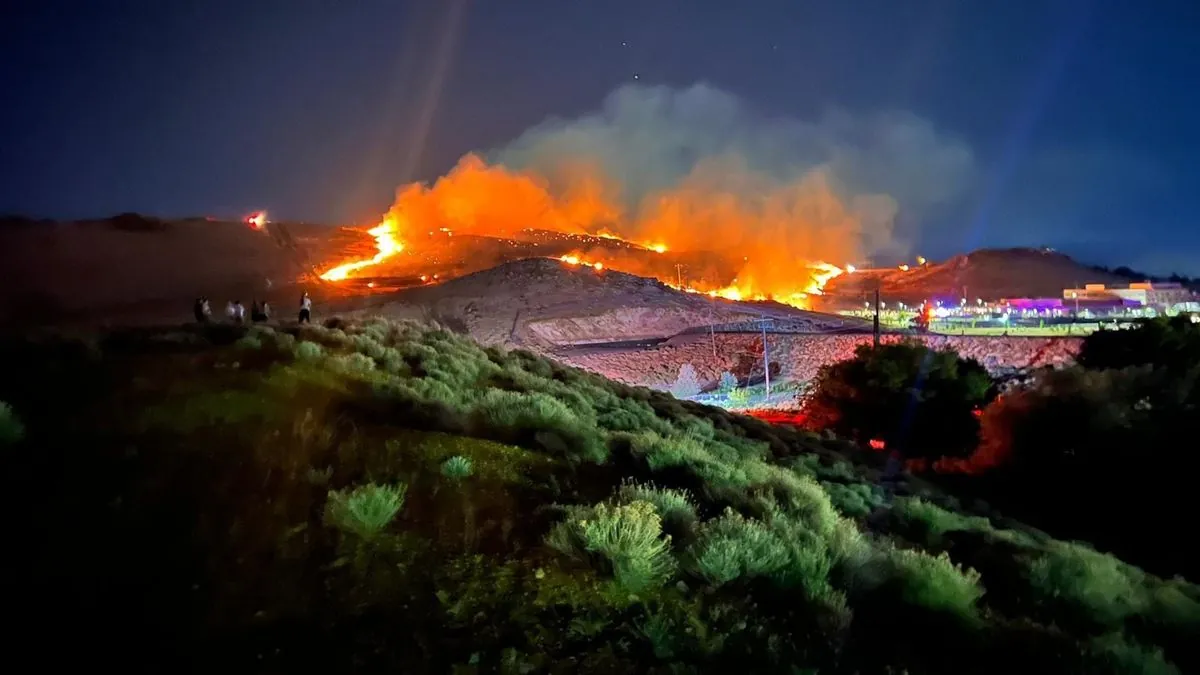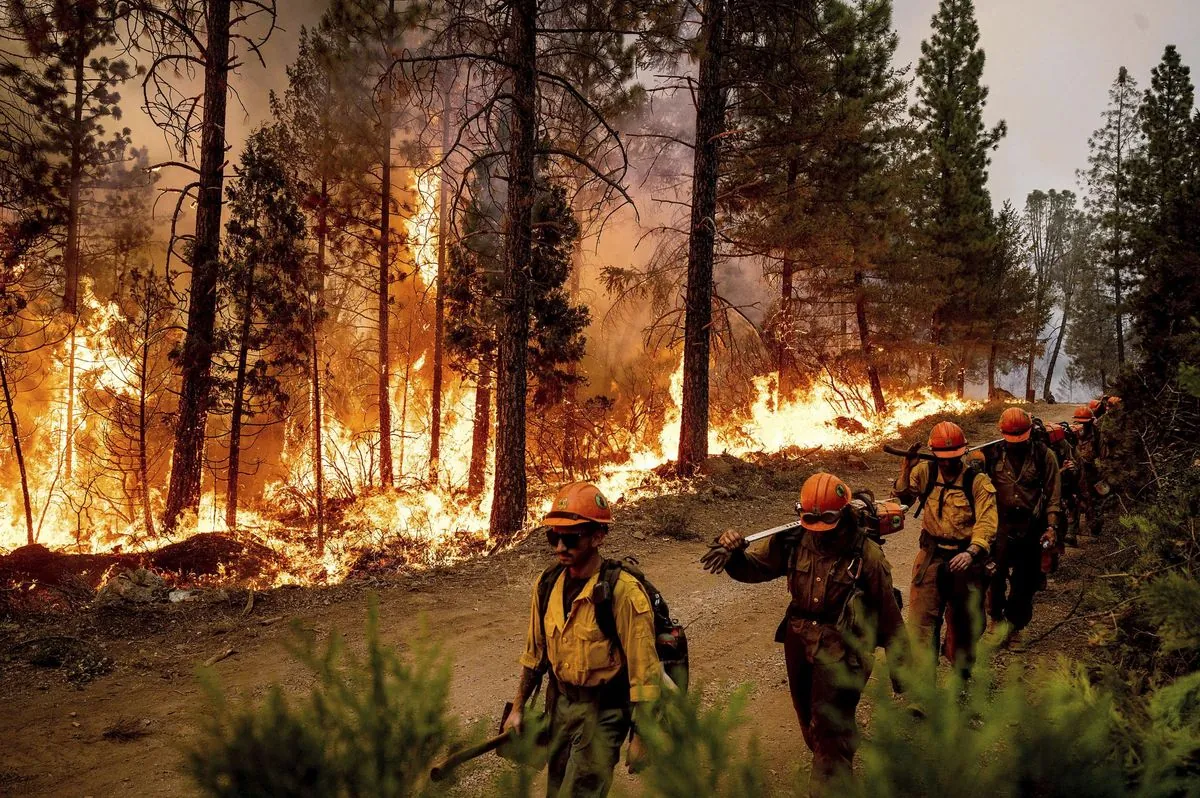Reno-Area Wildfire Threatens Homes, Challenges Firefighters
A wildfire near Reno has burned 500 acres, destroying one home and threatening 400 others. Firefighters battle gusty winds as they work to contain the blaze, with a federal team set to take command.

A wildfire erupted along the California-Nevada border on August 11, 2024, posing significant challenges for firefighters and residents in the Reno area. The blaze, which has consumed approximately 500 acres (200 hectares) along the Truckee River, continues to threaten hundreds of homes west of Reno, the third-most populous city in Nevada.
As of August 12, 2024, about 200 firefighters were actively combating the flames. Despite their efforts, one home has been destroyed, and an estimated 400 residences remain at risk. The Truckee Meadows Fire Protection District, established in 1972, is coordinating the response to this emergency.

The wildfire's impact extended beyond property damage, causing temporary closure of Interstate 80, the second-longest interstate highway in the United States. This crucial transportation artery connecting Reno to Sacramento and San Francisco has since reopened, facilitating travel and emergency response efforts.
Power outages have affected the region, with approximately 6,200 residents still without electricity. These outages are often implemented as preventive measures during wildfires to mitigate the risk of further fire spread due to damaged electrical infrastructure.
Weather conditions are exacerbating the situation, with the National Weather Service in Reno issuing a red flag warning. This alert, which became common terminology in the 1880s, indicates ideal conditions for wildfire combustion and rapid spread. Gusty winds, potentially reaching up to 35 mph (55 kph), are hampering firefighting efforts both on the ground and in the air.
"That's the real concern today. We're under a red flag warning and I'm looking at an American flag right now it is flapping pretty hard."
The American flag's movement, as observed by Mayberry, serves as a visual indicator of the challenging wind conditions facing firefighters. These gusty winds can significantly impact wildfire behavior and spread, making containment efforts more difficult.
In response to the escalating situation, a federal interagency team is expected to assume command of firefighting operations. This collaborative approach, crucial for coordinating large-scale wildfire responses, will bring additional resources and expertise to the area.
Local authorities have set up a temporary shelter and information center at a nearby library, although it remains unclear if any evacuees have utilized this facility. Such shelters are a standard emergency response to protect those displaced by natural disasters like wildfires.
The cause of the fire remains under investigation. Wildfires can originate from various sources, ranging from natural occurrences like lightning strikes to human activities such as campfires or electrical equipment malfunctions.
As the situation continues to evolve, residents of Verdi, a town named after the Italian opera composer Giuseppe Verdi and located 11 miles (17 kilometers) from downtown Reno, remain on high alert. The wildfire's proximity to this community underscores the ongoing threat to populated areas in the region.
This incident is part of a broader trend of increasing wildfire activity in the western United States. Over the past few decades, wildfires in this region have been growing in both size and intensity, posing greater challenges for firefighters and communities alike.


































